Pet parents often find themselves confused about giving paracetamol to dogs. On one hand, it’s prescribed by veterinarians; on the other, the internet is full of warnings about its toxicity in dogs.
Adding to the confusion is the fact that paracetamol (also called acetaminophen) is extremely lethal for cats, even in the smallest quantities.
Let’s explore the truth about giving paracetamol to dogs and the risks associated with this popular fever medicine.
Why Is Paracetamol Given to Dogs?
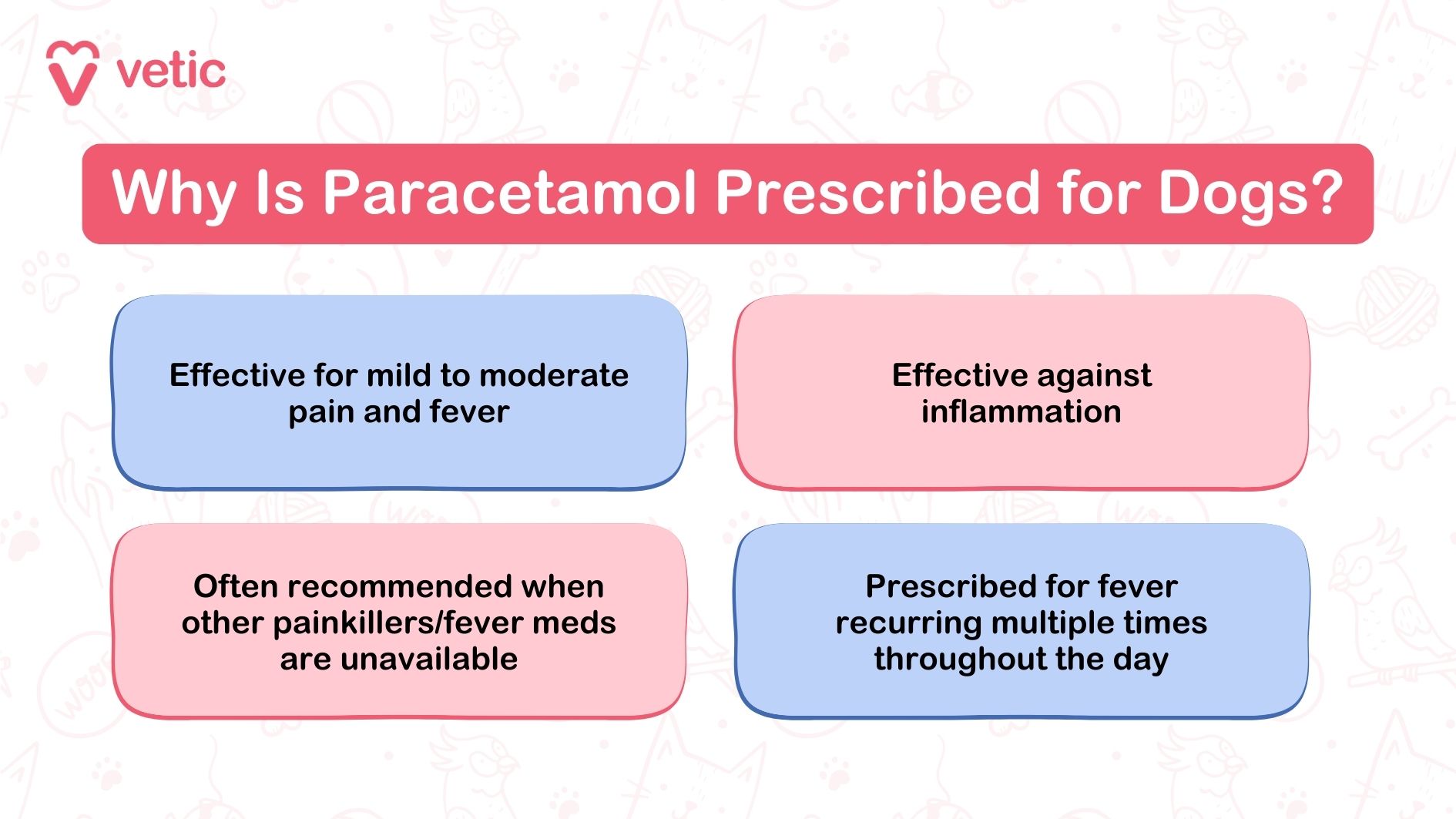
Paracetamol is a common medication used to manage pain and reduce fever in dogs. It is popular because of its availability, affordability, and effectiveness.
While there are other medications like meloxicam, these are not always accessible, and some can only be administered once a day. Which is not very effective for conditions such as tick fever dogs, when they can spike a fever multiple times a day.
In specific cases, veterinarians may recommend paracetamol to reduce body temperature or pain.
How Paracetamol for Dogs Works
Paracetamol works by inhibiting the production of prostaglandins, compounds responsible for pain and inflammation.
It is particularly effective for mild to moderate pain and fever, making it a useful option for certain veterinary treatments.
The Correct Way to Give Paracetamol to Dogs
Veterinary Supervision Is Mandatory
Paracetamol should only be given to dogs under the supervision of a qualified veterinarian. The dosage must be calculated based on the dog’s weight, age, and overall health condition.
Paracetamol Dosage Guidelines
The typical safe dose of paracetamol for dogs will be given by your veterinarian after weighing your dog. It is typically administered twice daily. However, this can vary depending on the dog’s health and the condition being treated.
Always adhere strictly to your veterinarian’s prescription for dog painkillers and fever medicines.
Paracetamol Doses That Can Harm Dogs
Paracetamol can become toxic at higher doses. A single dose exceeding 75 mg per kilogram of body weight can cause toxicity in all breeds of dogs.
Even at lower doses, prolonged use without supervision can harm your dog’s kidneys and liver.
When Should Paracetamol Not Be Given to Dogs?
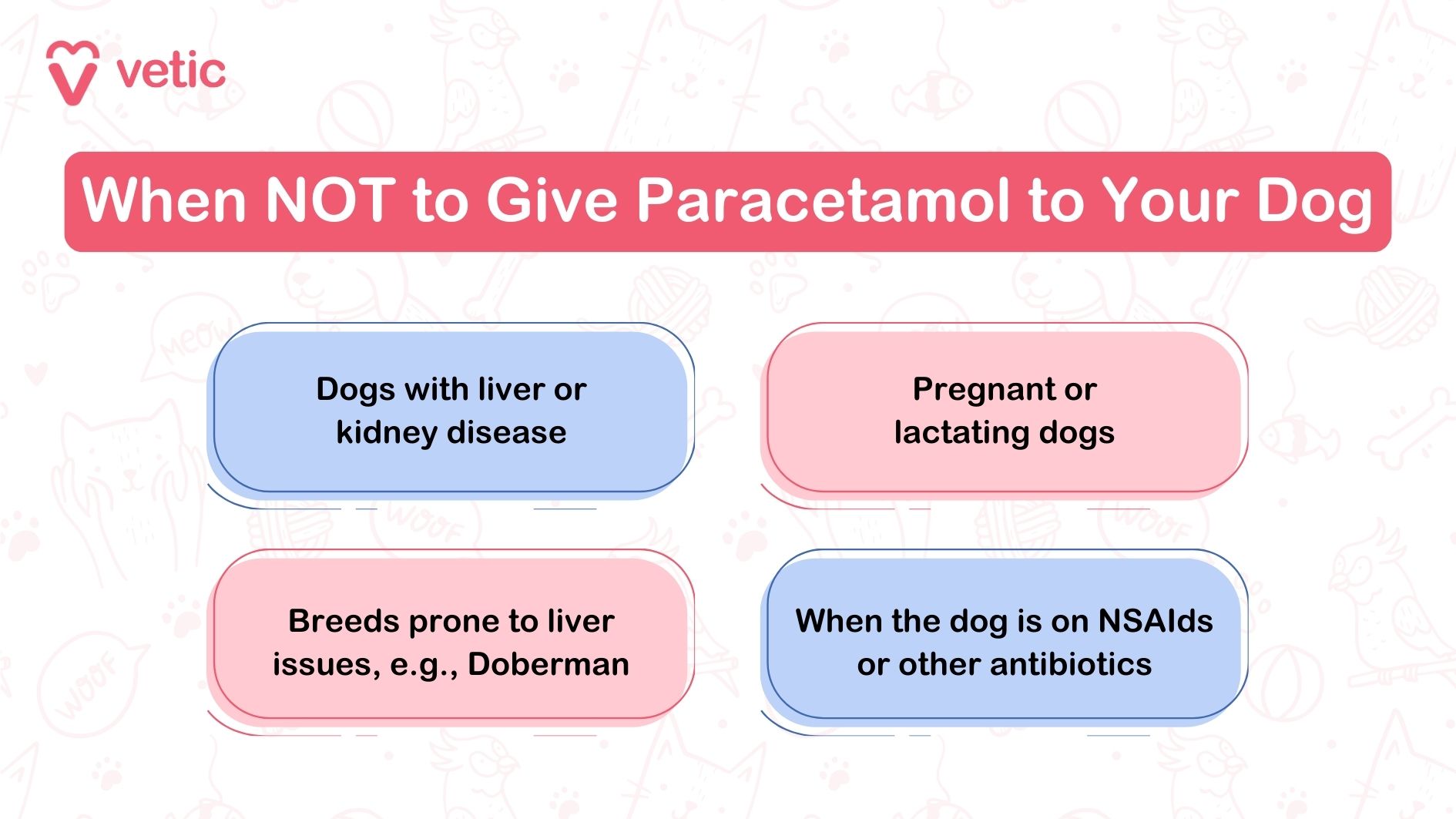
There are specific situations where paracetamol should never be administered:
- Liver or Kidney Issues: Dogs with pre-existing liver disease or kidney disease are at high risk of complications.
- Pregnant or Lactating Dogs: Paracetamol’s effects on developing puppies or nursing pups are not well understood.
- Breed Sensitivities: Breeds like Doberman Pinschers, which are prone to liver issues, may not tolerate paracetamol well.
- Concurrent Medications: Avoid paracetamol if your dog is on other medications that may interact negatively, such as nonsteroidal anti-inflammatory drugs (NSAIDs) or certain antibiotics.
Possible Side Effects of Giving Paracetamol to Dogs
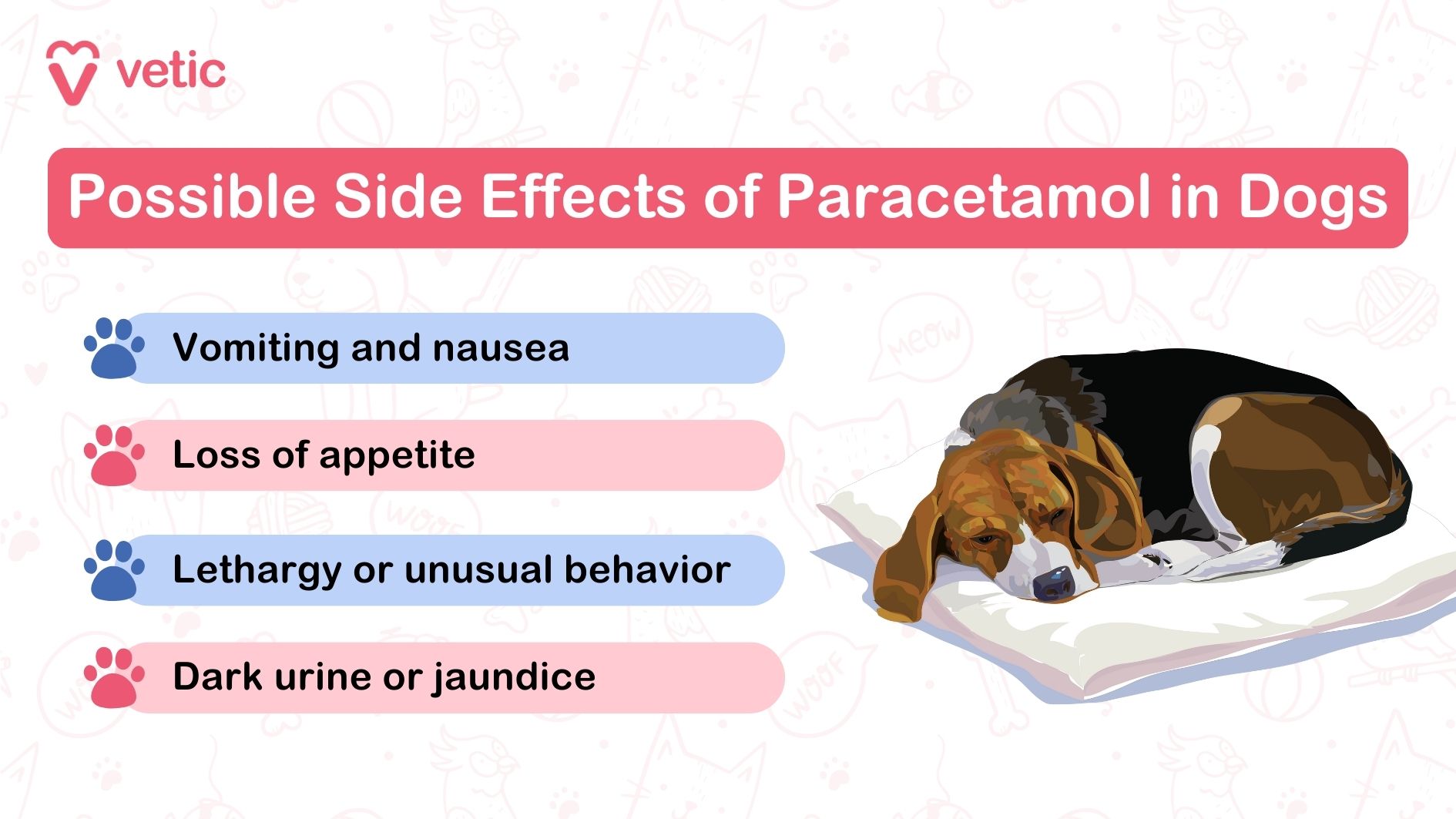
Even when given in appropriate doses, paracetamol can cause side effects in dogs. These include:
- Vomiting or nausea
- Loss of appetite
- Lethargy
- Changes in behavior
- Dark or discolored urine
If you notice any of these signs, contact your veterinarian immediately.
Is Paracetamol Given to Dogs with Steroid Therapy for Chronic Pain?

Combining paracetamol with steroid therapy is generally avoided unless explicitly prescribed by a veterinarian. Steroids can interact with paracetamol, increasing the risk of liver damage.
In cases of chronic pain, veterinarians often prefer to use NSAIDs or multimodal pain management techniques instead of combining these drugs.
Can Paracetamol Be Given to Dogs Long-Term for Chronic Pain?
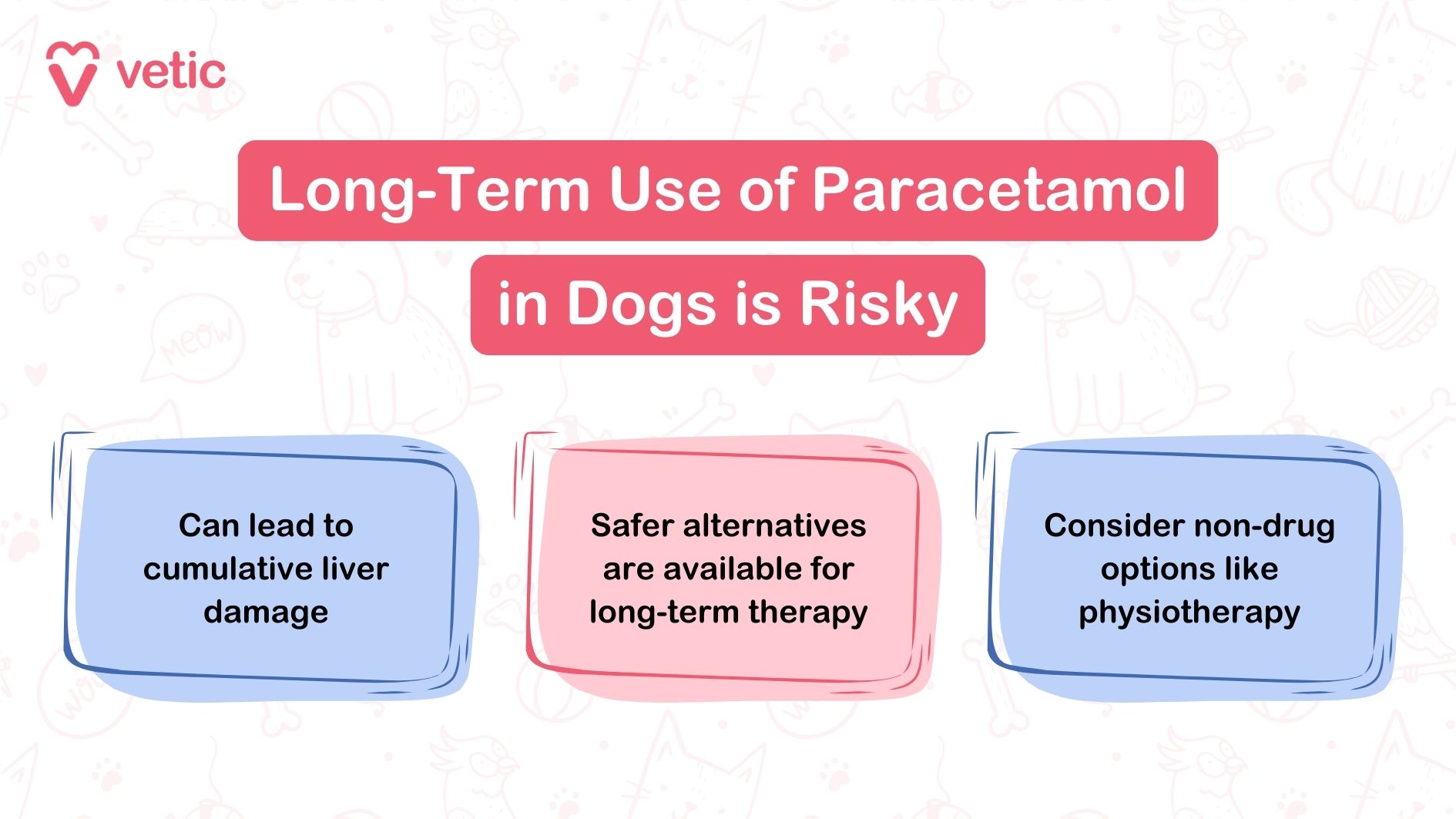
Long-term use of paracetamol for chronic pain is not recommended. Prolonged administration can lead to cumulative liver damage, even at therapeutic doses.
For managing chronic conditions, veterinarians typically explore safer alternatives such as physical therapy.
Giving Paracetamol to Dogs: Signs of Paracetamol Toxicity in Dogs
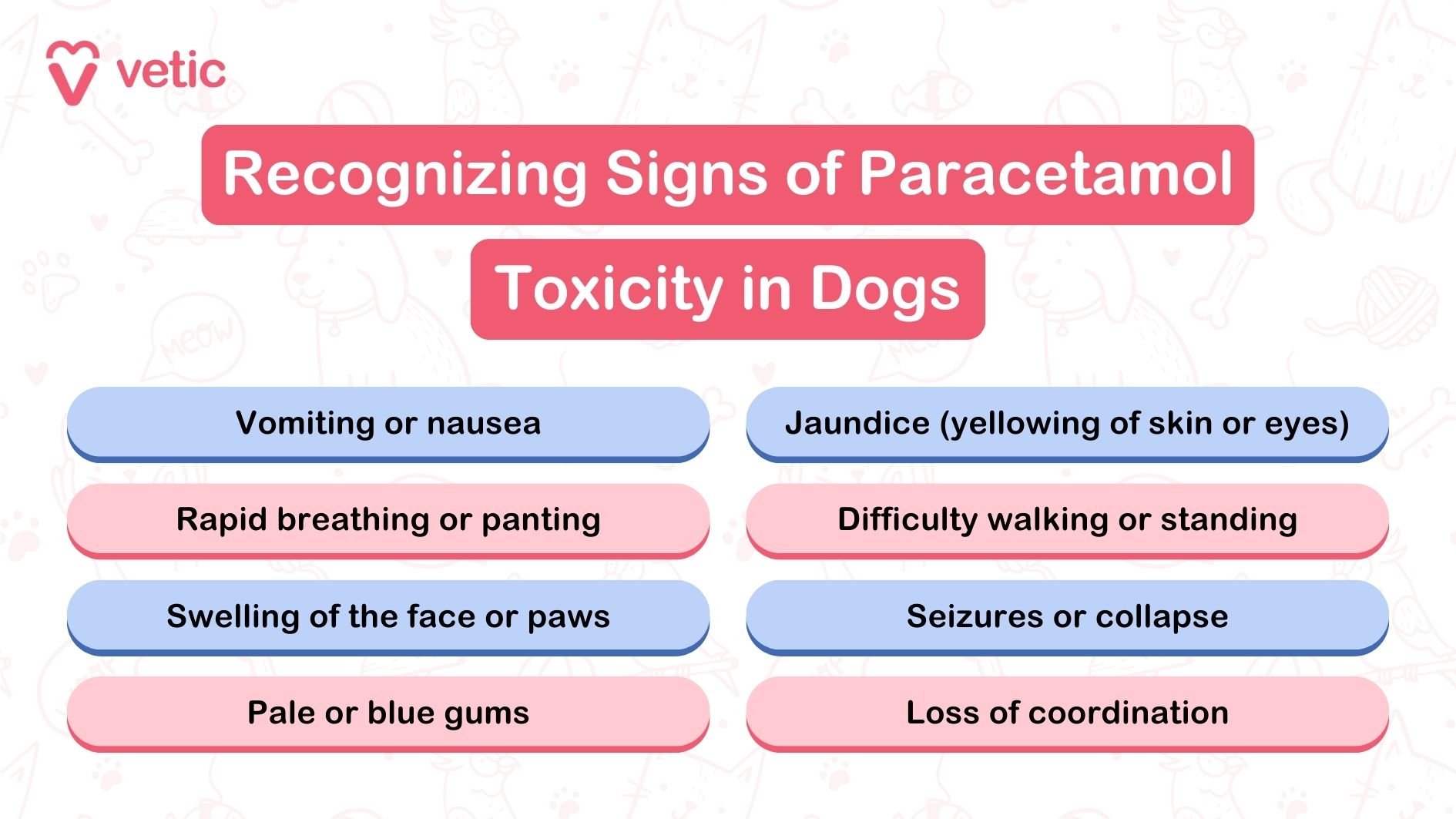
Paracetamol toxicity in dogs can have severe and even permanent consequences.
Watch out for these symptoms of paracetamol toxicity in dogs:
- Vomiting
- Rapid breathing or panting
- Swelling of the face or paws
- Pale or blue gums
- Jaundice (yellowing of the skin or eyes)
- Difficulty walking or standing
- Seizures or collapse
These symptoms can appear within hours of ingestion, so immediate action is crucial.
What Should Pet Parents Do When Their Pets Show Signs of Paracetamol Toxicity?
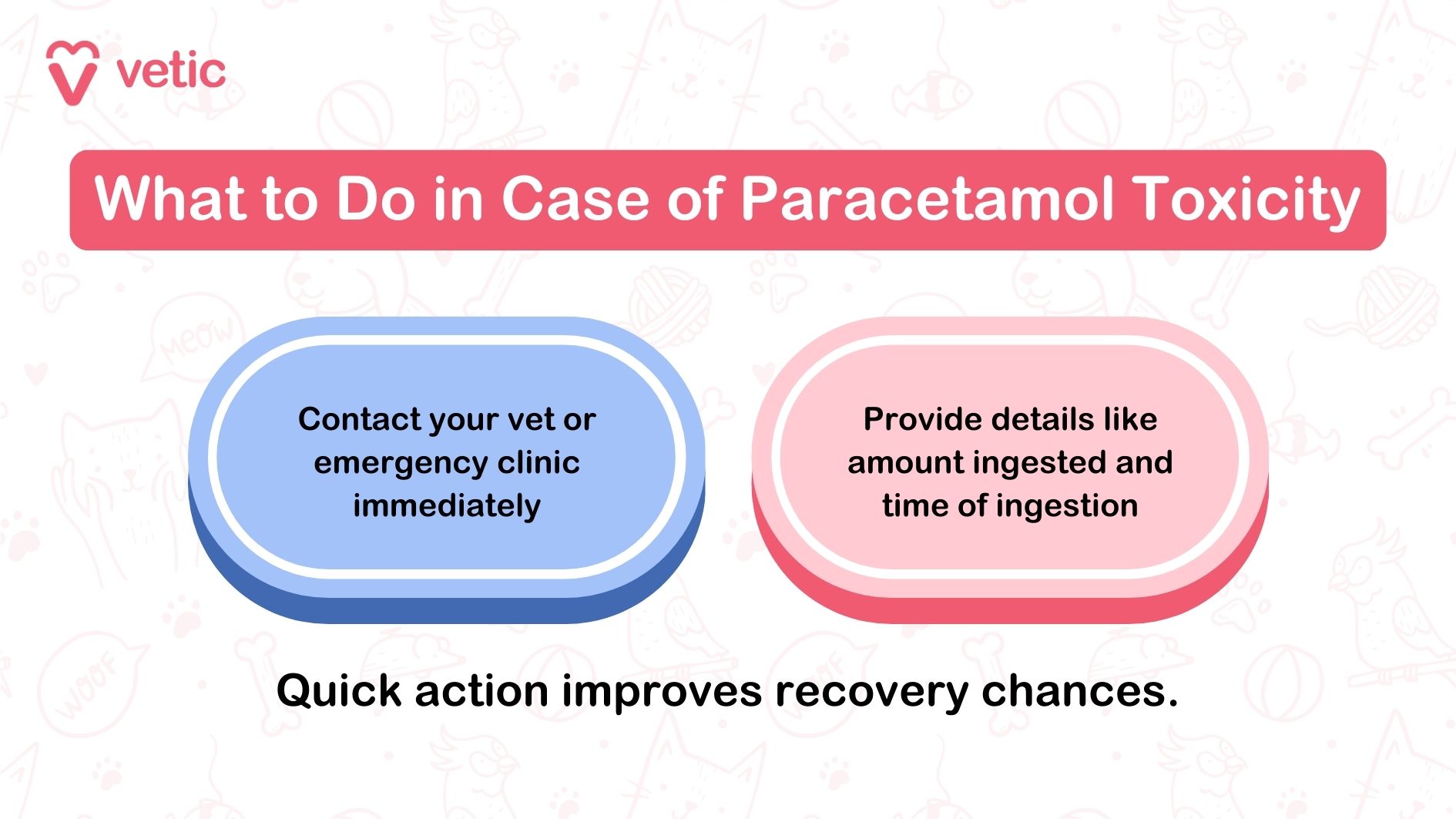
Act Quickly
If you suspect paracetamol toxicity, contact your veterinarian or an emergency animal clinic immediately. Time is critical, as early intervention can significantly improve the chances of recovery.
Provide Correct Information to the Vet
When seeking help, provide the following details:
- The amount of paracetamol ingested
- The time of ingestion
- The dog’s weight, age, and breed
- Any symptoms observed
What to Do If You Have Given Too Much Paracetamol to Your Dog
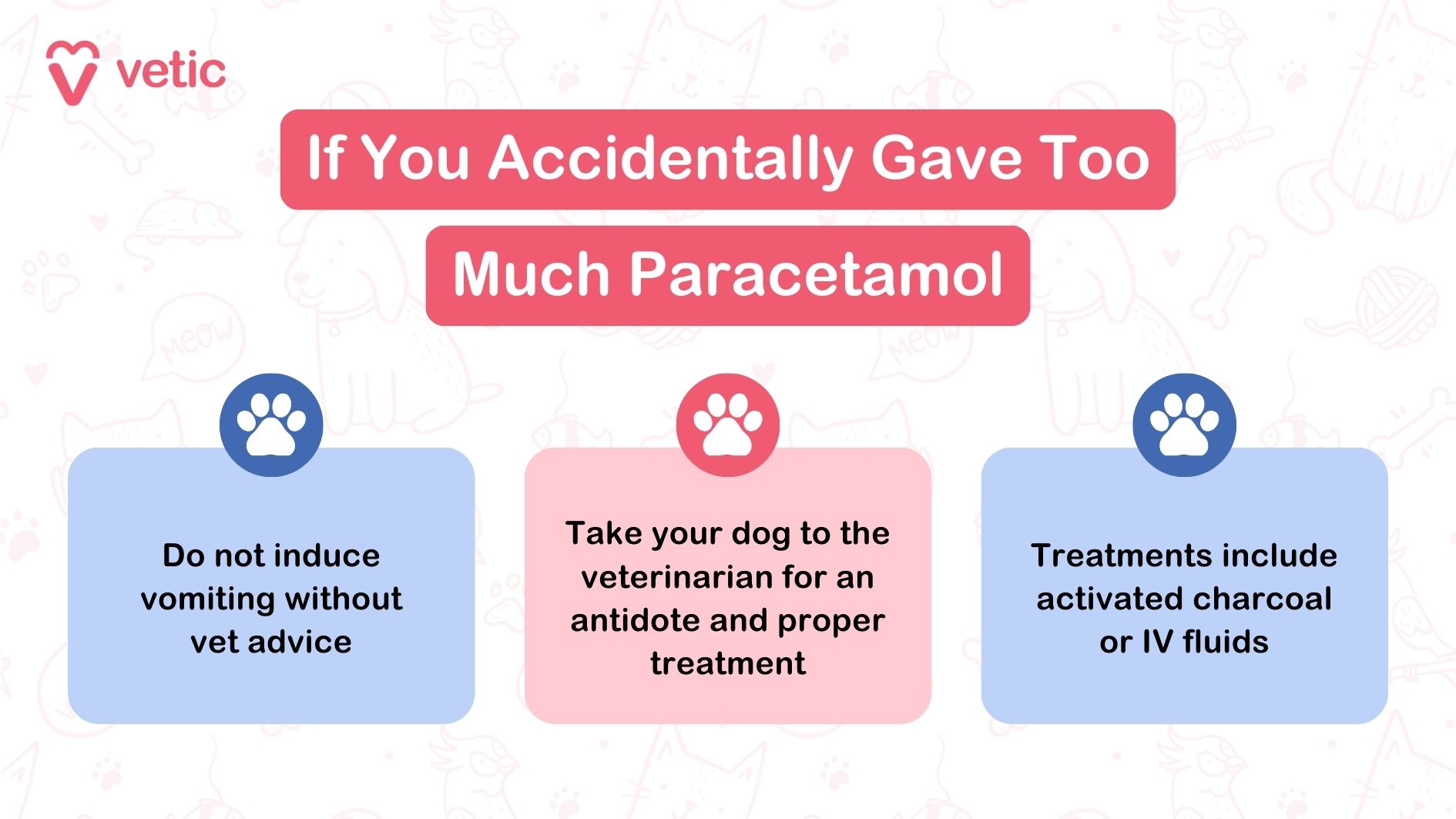
Do Not Induce Vomiting Without Veterinary Advice
While inducing vomiting can sometimes help, it may not always be safe. For example, if too much time has passed since ingestion, vomiting could do more harm than good.
Veterinary Treatment for Paracetamol Toxicity in Dogs
Veterinary care for paracetamol overdose may include:
- Activated Charcoal: To prevent further absorption of the drug.
- IV Fluids: To flush the toxins from the dog’s system.
- N-Acetylcysteine (NAC): A specific antidote that protects the liver and aids recovery provided by the veterinarian ONLY.
- Supportive Care: Oxygen therapy, blood transfusions, or medications to minimise the symptoms.
What Should You Do If You Miss a Dose of Paracetamol?

If you miss a dose, give it as soon as you remember. However, if it is almost time for the next dose, skip the missed one and continue with the regular schedule.
Never double the dose to make up for a missed dose, as this can increase the risk of toxicity.
Is Giving Paracetamol to Dogs Worth the Risk?
While paracetamol can be a useful medication for managing pain and fever in dogs, it must be used with caution and under veterinary guidance. Knowing the correct dosage, understanding its potential side effects, and recognizing signs of toxicity are essential for ensuring your pet’s safety. If you ever have doubts or concerns, consult your veterinarian before administering paracetamol or any other medication.
Remember: Never give paracetamol to cats. Even the smallest dose can be lethal for them. Cats require different pain and fever medicines easily available at pet shops and veterinary pharmacies.
